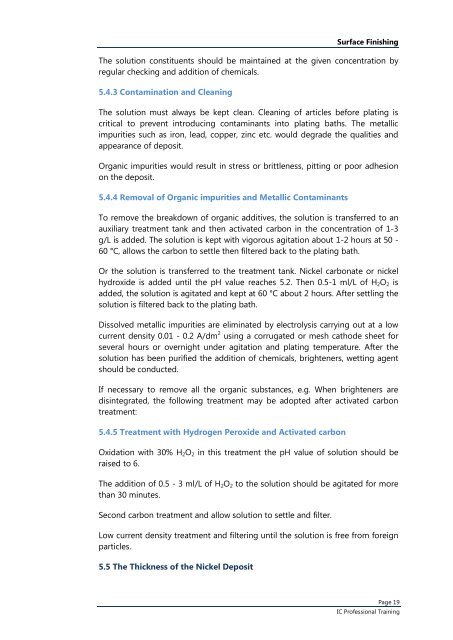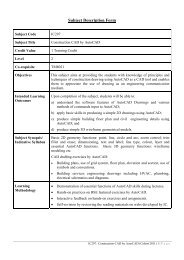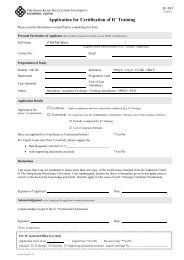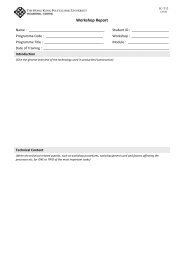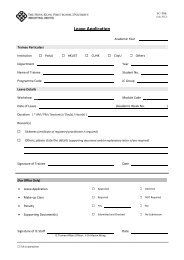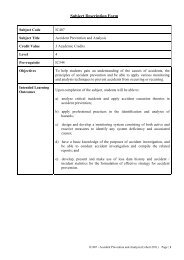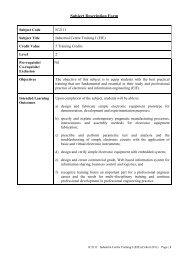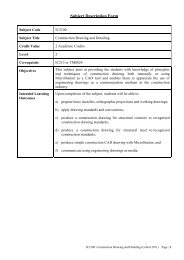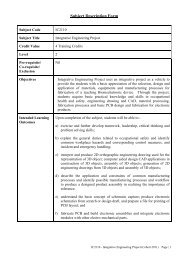Surface Finishing - The Hong Kong Polytechnic University
Surface Finishing - The Hong Kong Polytechnic University
Surface Finishing - The Hong Kong Polytechnic University
Create successful ePaper yourself
Turn your PDF publications into a flip-book with our unique Google optimized e-Paper software.
<strong>Surface</strong> <strong>Finishing</strong><strong>The</strong> solution constituents should be maintained at the given concentration byregular checking and addition of chemicals.5.4.3 Contamination and Cleaning<strong>The</strong> solution must always be kept clean. Cleaning of articles before plating iscritical to prevent introducing contaminants into plating baths. <strong>The</strong> metallicimpurities such as iron, lead, copper, zinc etc. would degrade the qualities andappearance of deposit.Organic impurities would result in stress or brittleness, pitting or poor adhesionon the deposit.5.4.4 Removal of Organic impurities and Metallic ContaminantsTo remove the breakdown of organic additives, the solution is transferred to anauxiliary treatment tank and then activated carbon in the concentration of 1-3g/L is added. <strong>The</strong> solution is kept with vigorous agitation about 1-2 hours at 50 -60 °C, allows the carbon to settle then filtered back to the plating bath.Or the solution is transferred to the treatment tank. Nickel carbonate or nickelhydroxide is added until the pH value reaches 5.2. <strong>The</strong>n 0.5-1 ml/L of H 2 O 2 isadded, the solution is agitated and kept at 60 °C about 2 hours. After settling thesolution is filtered back to the plating bath.Dissolved metallic impurities are eliminated by electrolysis carrying out at a lowcurrent density 0.01 - 0.2 A/dm 2 using a corrugated or mesh cathode sheet forseveral hours or overnight under agitation and plating temperature. After thesolution has been purified the addition of chemicals, brighteners, wetting agentshould be conducted.If necessary to remove all the organic substances, e.g. When brighteners aredisintegrated, the following treatment may be adopted after activated carbontreatment:5.4.5 Treatment with Hydrogen Peroxide and Activated carbonOxidation with 30% H 2 O 2 in this treatment the pH value of solution should beraised to 6.<strong>The</strong> addition of 0.5 - 3 ml/L of H 2 O 2 to the solution should be agitated for morethan 30 minutes.Second carbon treatment and allow solution to settle and filter.Low current density treatment and filtering until the solution is free from foreignparticles.5.5 <strong>The</strong> Thickness of the Nickel DepositPage 19IC Professional Training


